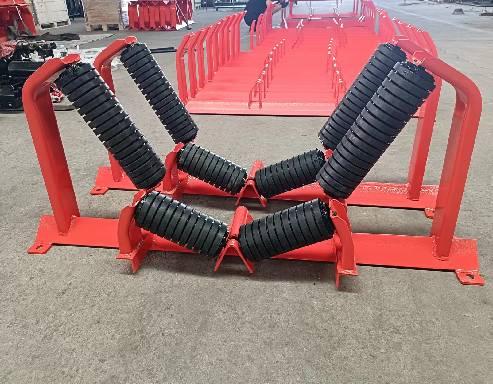 Afrikaans
Afrikaans  Albanian
Albanian  Amharic
Amharic  Arabic
Arabic  Armenian
Armenian  Azerbaijani
Azerbaijani  Basque
Basque  Belarusian
Belarusian  Bengali
Bengali  Bosnian
Bosnian  Bulgarian
Bulgarian  Catalan
Catalan  Cebuano
Cebuano  Corsican
Corsican  Croatian
Croatian  Czech
Czech  Danish
Danish  Dutch
Dutch  English
English  Esperanto
Esperanto  Estonian
Estonian  Finnish
Finnish  French
French  Frisian
Frisian  Galician
Galician  Georgian
Georgian  German
German  Greek
Greek  Gujarati
Gujarati  Haitian Creole
Haitian Creole  hausa
hausa  hawaiian
hawaiian  Hebrew
Hebrew  Hindi
Hindi  Miao
Miao  Hungarian
Hungarian  Icelandic
Icelandic  igbo
igbo  Indonesian
Indonesian  irish
irish  Italian
Italian  Japanese
Japanese  Javanese
Javanese  Kannada
Kannada  kazakh
kazakh  Khmer
Khmer  Rwandese
Rwandese  Korean
Korean  Kurdish
Kurdish  Kyrgyz
Kyrgyz  Lao
Lao  Latin
Latin  Latvian
Latvian  Lithuanian
Lithuanian  Luxembourgish
Luxembourgish  Macedonian
Macedonian  Malgashi
Malgashi  Malay
Malay  Malayalam
Malayalam  Maltese
Maltese  Maori
Maori  Marathi
Marathi  Mongolian
Mongolian  Myanmar
Myanmar  Nepali
Nepali  Norwegian
Norwegian  Norwegian
Norwegian  Occitan
Occitan  Pashto
Pashto  Persian
Persian  Polish
Polish  Portuguese
Portuguese  Punjabi
Punjabi  Romanian
Romanian  Russian
Russian  Samoan
Samoan  Scottish Gaelic
Scottish Gaelic  Serbian
Serbian  Sesotho
Sesotho  Shona
Shona  Sindhi
Sindhi  Sinhala
Sinhala  Slovak
Slovak  Slovenian
Slovenian  Somali
Somali  Spanish
Spanish  Sundanese
Sundanese  Swahili
Swahili  Swedish
Swedish  Tagalog
Tagalog  Tajik
Tajik  Tamil
Tamil  Tatar
Tatar  Telugu
Telugu  Thai
Thai  Turkish
Turkish  Turkmen
Turkmen  Ukrainian
Ukrainian  Urdu
Urdu  Uighur
Uighur  Uzbek
Uzbek  Vietnamese
Vietnamese  Welsh
Welsh  Bantu
Bantu  Yiddish
Yiddish  Yoruba
Yoruba  Zulu
Zulu Types and Applications of Belt Drive Pulleys in Mechanical Systems
Types of Belt Drive Pulleys
Belt drive systems are crucial components in mechanical engineering, widely utilized for power transmission in various industrial applications. They consist of two or more pulleys connected by a belt, allowing the transfer of rotational motion from one pulley to another. Understanding the different types of belt drive pulleys is essential for selecting the right system for specific applications. This article explores various types of belt drive pulleys, discussing their characteristics, applications, and advantages.
1. Flat Pulleys
Flat pulleys, also called flat belt pulleys, feature a simple design with a flat surface that allows a flat belt to rest directly on the pulley. These pulleys are primarily used in applications where moderate speed and power transmission are required. They offer a straightforward design, which makes them easy to manufacture and maintain. Flat pulleys are commonly found in older machinery and are still used in some modern applications due to their simplicity and efficiency.
2. V-Belt Pulleys
V-belt pulleys have a distinctive groove shaped like a V in their circumference, designed to accommodate V-belts. This design allows for a snug fit that helps to prevent slippage, making V-belt pulleys highly efficient for power transmission. They are commonly used in automotive applications and industrial machinery, such as conveyors and fans. The advantage of V-belt pulleys is their ability to transmit higher torque and operate effectively under varying load conditions.
Round belt pulleys feature a smooth cylindrical surface, designed to work with round belts. These pulleys are typically used in applications where minimal friction is necessary or in systems requiring constant tension. Round belts are flexible and can easily navigate around pulleys, making them suitable for applications like light-duty conveyors and small machinery. The primary advantage of round belt pulleys is their ability to reduce wear and tear compared to flat or V-belt systems.
belt drive pulley types

4. Timing Pulleys
Timing pulleys, also known as synchronous pulleys, have teeth that fit into corresponding grooves on timing belts. This mechanism allows for precise movement and synchronization between pulleys, making them ideal for applications that require accurate timing, such as in robotics and CNC machines. Timing pulleys ensure that there is no slippage, maintaining synchronization over longer distances and ensuring repeatable motion. Their ability to handle both high speeds and loads makes them increasingly popular in modern automated systems.
5. Idler Pulleys
Idler pulleys are not typically part of the power transmission system but are vital in maintaining proper tension in a belt drive system. They guide the belt, preventing it from slipping off the driven pulley and ensuring smooth operation. Idler pulleys can be found in nearly all types of belt drive systems, whether they employ flat, V, round, or timing belts. Although they do not directly contribute to power transmission, they help enhance the longevity and efficiency of the entire belt drive system.
6. Adjustable Pulleys
Adjustable pulleys allow for the modification of center distances or belt tension in a belt drive system. This adjustability can be achieved through various mechanisms, making them versatile for changing scenarios. For instance, they are often used in applications where load conditions might change frequently, such as in fitness equipment or variable speed drives. The flexibility of adjustable pulleys improves efficiency and operational flexibility.
Conclusion
Selecting the right type of belt drive pulley depends on the specific requirements of the application, including load capacity, speed, and desired efficiency. Each type of pulley has distinct advantages and best-use scenarios, from flat and V-belt pulleys to more advanced timing and idler types. Understanding these differences is essential for engineers and technicians who are involved in the design, maintenance, or upgrade of machinery and systems that rely on belt drive mechanisms. By choosing the right pulley type, one can ensure optimal performance, efficiency, and longevity of the equipment in use.
-
Revolutionizing Conveyor Reliability with Advanced Rubber Lagging PulleysNewsJul.22,2025
-
Powering Precision and Durability with Expert Manufacturers of Conveyor ComponentsNewsJul.22,2025
-
Optimizing Conveyor Systems with Advanced Conveyor AccessoriesNewsJul.22,2025
-
Maximize Conveyor Efficiency with Quality Conveyor Idler PulleysNewsJul.22,2025
-
Future-Proof Your Conveyor System with High-Performance Polyurethane RollerNewsJul.22,2025
-
Driving Efficiency Forward with Quality Idlers and RollersNewsJul.22,2025





























